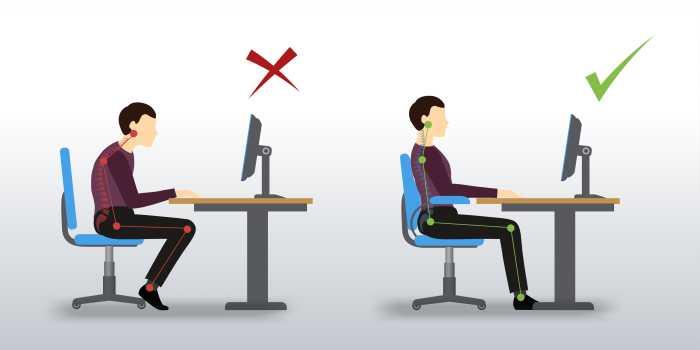Emergency Message
Welcome to Moov India Website! This website may store cookies.
With social distancing norms being an integral part of the new normal, the WFH (work from home) model has been widely adopted by companies both big and small. However, with the rise in WFH, many people now find it difficult to tear themselves away from their computer. This has resulted in longer hours of sitting in front of the computer screen, trying to complete assignments, having video calls, and updating work on project management and their online tools.
Against this backdrop, it has become even more important to be conscious about our posture while working. A good posture has huge payoffs in terms of physical health in the long run. It can minimize the risk of back pain, ease pressure on the spinal ligaments and prevent muscle fatigue. In fact, healthy body alignment helps you focus better, while increasing mental alertness, thereby increasing productivity. So, here are 8 things to take care of to maintain a neutral spinal position.
While sitting at your desk, ensure a small curvature near the lower back. This can be done by putting a small cushion or a rolled towel. It will help in sitting straight and avoiding a hunched back. This posture also looks more professional when you’re on a video conference with colleagues or clients.
Working for long hours at a computer can strain your shoulders and the lower neck area. Try to keep your hips, shoulder and ears aligned in a vertical line to maintain the correct sitting posture.
This is one of the most effective positions to prevent muscle pulls and tension. Place the elbows at the side and keep them straight. Make sure they are forming an ‘L’ shape while you are working. The best way to achieve this is to put your hands on the arm rests of the chair.

Do not grasp the chair seat with your knees and place the leg on the footrest. Keep the knees at a 90-degree angle with your hips to avoid bending forward. This is particularly important to prevent strain on the hip and back.
To avoid either bending forward or slouching your back, place your buttocks against the back of your chair.

When sitting for long hours, it is tempting to tilt on one side for a comfortable position. However, try to keep your body weight well distributed on both hips for a perfect posture.
While concentrating on the screen (whether computer or mobile), we tend to bend our head forward. This can cause migraine, insomnia and chronic fatigue. Hence, ensure that your head is not protruding in the front even when you’re working on something critical.
If sitting on the couch or floor to work, sit with both your feet touching each other in front. This relieves stress and stretches the inner thighs and groin. This is a better position compared to putting your leg one below the other (the Butterfly position or the cross-legged position. Crossed knees put pressure on the peroneal nerve, located behind the knee. You might even go numb for a while, which indicates restrictions in blood flow through your body.
Be mindful of how you sit. This can save you from future ailments and help live a pain-free life.